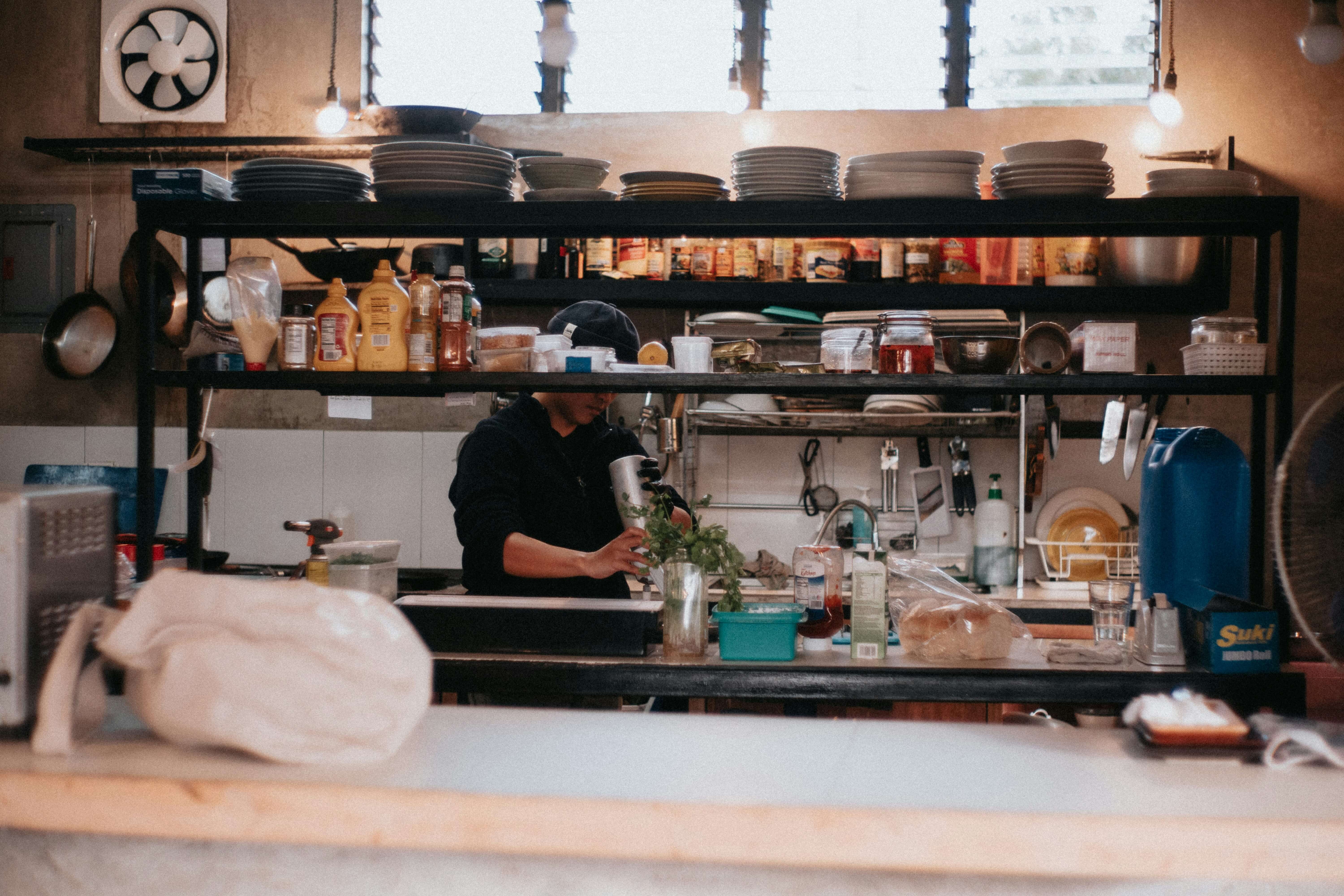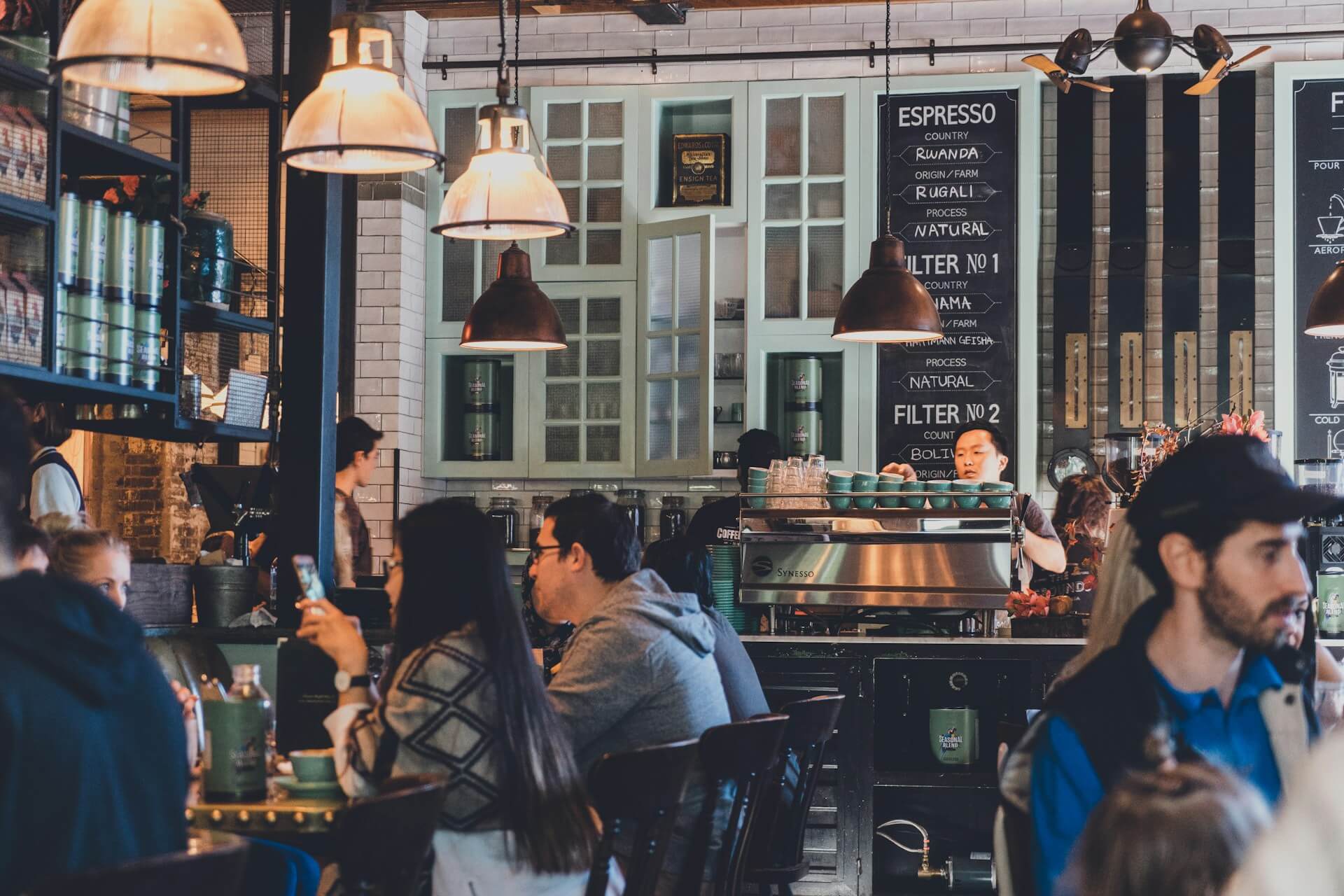The quick-service restaurant (QSR) world is shifting fast, with new models popping up to meet the rising demand for restaurant delivery services. One of the biggest game-changers? Ghost kitchens. These kitchens skip the dine-in setup and focus only on prepping the food for online orders – bringing various operational benefits to restaurants.
In this guide, we’ll cover:
- Ghost kitchen meaning
- How do ghost kitchens work?
- Why are ghost kitchens becoming more popular?
- Advantages of ghost kitchens
- Disadvantages of ghost kitchens
- Example of a ghost kitchen
- Five things to consider before setting up a ghost kitchen
- How Dojo can help
- FAQs
Beyond the brick-and-mortar: What is a ghost kitchen?
A ghost kitchen – also known as a dark kitchen, cloud kitchen, or virtual restaurant – is a kitchen that operates without a traditional dining area. These setups are delivery-only and focus on fulfilling online orders without a physical restaurant space.
By keeping operations behind the scenes, ghost kitchens save on costs and bring extra flexibility for QSRs looking to scale up their restaurant delivery service.
Secret sauce exposed: How do ghost kitchens work?
Using shared commissary spaces
Some ghost kitchens run out of shared kitchen facilities, working alongside other brands or under one management team. This shared setup is considered operationally efficient as a more cost-effective alternative, allowing multiple brands to thrive in one space.
Using your current kitchen to launch a spin-off brand
For some dine-in restaurants, the simplest option is to turn part of their kitchen into a delivery-only spin-off brand. By creating a smaller, delivery-friendly menu, they can offer a whole new experience without opening a second location.
Renting out existing restaurant kitchens
If you’re an existing small business with some extra kitchen space, why not make the most of it? Renting out your kitchen during quieter times allows ghost brands to set up shop and brings in extra revenue without needing additional equipment.
From niche to necessity: Why are ghost kitchens becoming more popular?
Changing customer habits
Dark kitchens are booming, and it’s not hard to see why. When the pandemic hit, ordering in became a lifeline, and now, even as dining out picks up again, the convenience of delivery has stuck [1]. People love the ease of getting their favourite foods delivered, and the takeaway market in the UK is in the process of matching these changing habits.
Rising operational costs
With inflation and energy costs soaring, traditional setups with full dine-in service are pricier. A recent report shows UK hospitality businesses are facing a 63% surge in costs [2]. This has pushed many to find cost-effective alternatives like ghost restaurants as they offer a way to meet delivery demand without the overheads of a physical location.
It’s a win-win – ghost restaurants offer much-needed convenience to customers and restaurants can thrive in a quickly changing market.
Ghostly gains: Advantages of ghost kitchens
Lower overheads
With no dining area or front-of-house costs, dark kitchens slash operational expenses and allow restaurants to focus more on what matters – making great food and delivering it quickly. For enterprises, this can mean hefty savings.
Faster opening times
Forget the grand opening prep. Dark kitchens can get up and running fast, cutting through the usual delays that come with setting up a traditional restaurant.
Convenience
Without the demands of dine-in service, cloud kitchens can streamline operations and focus solely on fulfilling orders efficiently. It’s all about getting food to the customer as smoothly as possible.
Flexibility
Dark kitchens offer the flexibility to experiment with new menus or concepts without a huge commitment. It’s easy to pivot or test ideas in response to customer trends.
Additional revenue streams
For existing restaurants, ghost kitchens can bring in extra income by launching delivery-only brands alongside their main offerings – a great way to tap into new audiences without stretching resources.
Hidden hiccups: Disadvantages of ghost kitchens
Added costs and complexity
If you’re an established brand with a brick-and-mortar location, adding a cloud kitchen can bring extra costs and operational complexity. Managing both dine-in and delivery-only operations takes a lot of coordination to keep everything running smoothly.
Customer service challenges
For dark kitchens relying on third-party restaurant delivery service providers, customer service can sometimes take a hit. Unlike a traditional restaurant where staff interact directly with diners, dark kitchens rely on delivery drivers to represent their brand, which can affect the customer experience.
Brand awareness hurdles
Launching a new brand solely through a dark kitchen can make building brand recognition tougher. Without a physical presence, attracting and keeping customers can require extra marketing and strategic partnerships to get noticed in a competitive market.
From the shadows: Example of a ghost kitchen
Dishoom
Popular Indian restaurant Dishoom has embraced the cloud kitchen model by launching delivery-only kitchens. These locations allow Dishoom to serve a wider delivery area without the need for additional dine-in spaces, making it easier to bring their popular dishes to more people around the UK.
Deliveroo Editions
Deliveroo has taken the dark kitchen concept to a new level with Deliveroo Editions, which sets up dark kitchens in various locations across London, including Acton, Dulwich, and Brent Cross. These kitchens host multiple brands in one place, letting them reach high-demand areas without needing a traditional restaurant setup.
Avoid rookie mistakes: Five things to consider before setting up a ghost kitchen
Purpose
What’s the goal for your dark kitchen? Are you launching a brand-new food service from scratch, or is this an add-on to an existing business to generate extra revenue? Knowing your purpose will guide your setup and operations.
Research
Understanding the market is essential. Who are your competitors, and does the location work well for your target audience? Consider delivery times, operating hours, costs and whether there’s enough demand to support your ghost restaurant.
Space
Decide on your virtual restaurant setup. Will you rent time in an existing kitchen, share space during its downtime, or build a dedicated kitchen? Each option has different cost implications, so choose what fits your budget and needs.
Concept
What will set your cloud kitchen apart? Will you use it as a test bed for new recipes, an exclusive delivery-only menu, or focus on your best-sellers? Define what’s unique about your menu to attract and retain customers.
Marketing
A solid marketing plan is key to getting the word out about your cloud restaurant offering. Consider partnerships with third-party delivery apps, building a social media presence, and using word of mouth and referrals. The right marketing strategy will help drive visibility and orders.
Dojo can power your dark kitchen
Dependable and flexible payment options are key to smooth operations of your new ghost restaurant. If you’re a full-service or quick-service restaurant branching into a cloud kitchen for extra revenue, a reliable setup for both online payments and card machines will help you accept card payments seamlessly and keep customers happy, no matter where they’re ordering from.
And that’s where we come in. For small businesses like restaurants and takeaways struggling to get one view of their payments across both in-person and online orders, we offer a seamless solution.
Our payment solutions can integrate into existing websites or apps and create a bespoke checkout flow, all while consolidating payment management into one easy-to-use platform. No more juggling between different payment providers – just one view of every transaction through the Dojo for Business app. This helps QSRs save time on reconciliation and focus on what matters: boosting customer experience and driving sales.
For more information on growing your business, check out our blog.



